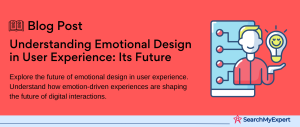What is User Journey Mapping?
User Journey Mapping is a strategic approach that enables businesses to visualize the process a customer or user goes through to achieve a specific goal with a product or service. It involves detailing each step of the user’s interaction from initial contact, through the process of engagement, to a long-term relationship. This mapping provides a bird’s-eye view of the customer’s experience, highlighting areas of friction and opportunities for improvement.
User journey maps vary in complexity. They can be simple, focusing on key touchpoints and emotions, or intricate, including detailed scenarios covering a wide range of user interactions. The core idea is to step into the user’s shoes and see the product or service from their perspective.
Benefits of User Journey Mapping
- Improved Usability: By understanding the steps a user takes, a business can streamline processes, remove unnecessary steps, and make the user experience more intuitive and enjoyable.
- Enhanced Customer Satisfaction: A journey map helps in identifying pain points in the user experience. Addressing these pain points leads to higher customer satisfaction as users find the product or service more accommodating to their needs.
- Positive Business Outcomes:
An optimized user journey can lead to increased engagement, higher conversion rates, and improved customer loyalty. When users find value and ease in their journey, they are more likely to continue using the service or product, thereby driving business success.
When to Use User Journey Mapping
- New Product Launches:
Understanding the user journey is crucial for the successful introduction of a new product. It helps in anticipating user needs and ensuring the product meets these expectations. - Website Redesigns: For websites, user journey mapping can identify navigation issues and content gaps. This insight is invaluable for redesigning a site to be more user-friendly and effective.
- Understanding Customer Churn:
Analyzing the journey of users who leave can provide insights into why they’re leaving and what can be done to retain them.
Define Your Personas
To effectively utilize User Journey Mapping, the first step is to identify and define your target users. This is achieved by creating personas – fictional profiles that represent your ideal customers. These personas are crafted based on market research, user data, and insights, capturing specific needs, goals, behaviors, and characteristics of different user segments. Defining these personas allows you to tailor the user journey to meet their specific needs and expectations.
Creating Personas: Key Elements to Consider
- Demographics: Include age, gender, occupation, education, and income. These factors can influence how a user interacts with your product or service.
- Behaviors: Understand how your personas interact with similar products or services. What are their habits, preferences, and frustrations?
- Goals and Motivations: What are they trying to achieve by using your product or service? Understanding their objectives is crucial for aligning the user journey with their goals.
- Challenges and Pain Points:
Identify the challenges they face in achieving their goals. This understanding can guide you in optimizing the user journey to address these issues.
Types of Personas
- Beginner: This persona represents users who are new to your product or industry. They need simplicity and clear guidance. Their journey should be designed to provide easy understanding and gradual engagement.
- Intermediate: These users have some experience but are not yet experts. They look for a balance between guidance and freedom. The journey for intermediates should offer more depth without overwhelming them.
- Advanced: Advanced personas are well-versed in your product or industry. They seek efficiency, customization, and advanced features. Their journey should be streamlined and offer opportunities for deeper engagement and exploration.
identify User Goals and Pain Points
After defining your personas, the next step in User Journey Mapping is to understand their goals and identify their pain points. This step is crucial for aligning your product, service, or website with the user’s needs and expectations.
Understanding User Goals
User goals are the objectives your personas aim to achieve through your product or service. These goals can be practical, emotional, or both. To identify these goals, consider the following aspects:
- Primary Objectives:
What are the main reasons users come to your product? It could be for information, a specific service, entertainment, or to purchase a product. - Secondary Objectives:
Beyond their main goal, what other benefits do users seek? This could include learning new skills, finding community, or gaining insights. - Emotional Needs: Often, user goals are not just about what they want to do, but also how they want to feel. Understanding these emotional drivers is key to creating a satisfying user experience.
Identifying Pain Points
Pain points are the frustrations, obstacles, and areas of confusion that users encounter on their journey. Identifying these pain points is essential for optimizing the user experience. To uncover these pain points, consider the following:
- Usability Issues:
Look for areas where users struggle with navigation, understanding how to use the product, or finding the information they need. - Technical Roadblocks: Identify any technical barriers, such as slow loading times, broken links, or compatibility issues with certain devices.
- Emotional Barriers: These are less tangible but equally important. They can include feelings of frustration, confusion, or mistrust.
- Feedback Analysis:
Leverage user feedback, reviews, and customer service inquiries to understand common complaints and issues.
Map the User Journey Phases
Creating a User Journey Map involves breaking down the user experience into distinct phases. Each phase has unique goals, actions, and touchpoints that cater to the user’s evolving needs and motivations. This detailed breakdown will encompass around 1000 words for each phase, providing an in-depth understanding of the entire journey.
Awareness Phase
Goals:
The Awareness phase is all about visibility and making potential users aware of your product or service. The primary goal is to capture the user’s attention and trigger their interest.
Actions and Touchpoints:
- Users discover your product through various channels such as social media, online ads, blog posts, or word-of-mouth recommendations.
- Initial interaction might include visiting your website, following your brand on social media, or signing up for a newsletter.
Strategies for Optimization:
- Content Marketing and SEO:
Produce engaging, valuable content and optimize it for search engines to increase visibility. - Social Media Presence: Actively engage with your audience on social platforms to build a community around your brand.
- Targeted Advertising: Use online advertising targeted at your ideal customer personas to increase brand awareness.
Consideration Phase
Goals:
In the Consideration phase, users are evaluating their options. They are actively researching to find the best solution to their needs or problems.
Actions and Touchpoints:
- Potential users might engage in comparing different products or services, reading reviews, and exploring detailed information about what you offer.
- They may interact with educational content, webinars, or product demos to understand more about your product.
Strategies for Optimization:
- Educational Content:
Provide comprehensive, informative content that addresses common questions and comparisons. - Customer Testimonials and Case Studies:
Use real-life success stories to build trust and credibility. - Responsive Customer Service:
Offer easily accessible support to answer any queries that arise during this phase.
Decision Phase
Goals:
The Decision phase is critical as it’s where the user decides whether to purchase your product or service.
Actions and Touchpoints:
- Users might engage in a free trial, consult customer service for final queries, or review pricing and package options.
- They seek assurance about the value and effectiveness of the product or service.
Strategies for Optimization:
- Trial Offers:
Provide free trials or demos to let users experience the value firsthand. - Clear Value Proposition: Communicate the unique benefits and features of your product effectively.
- Streamlined Decision-Making:
Make the decision process as easy and clear as possible, with straightforward pricing and a strong call to action.
Purchase Phase
Goals:
The Purchase phase focuses on facilitating a seamless transaction process for the user.
Actions and Touchpoints:
- This includes selecting the product or service, adding it to the cart, and the checkout process.
- Users enter their payment and possibly shipping information.
Strategies for Optimization:
- Simplified Checkout Process: Minimize the steps required to complete a purchase.
- Multiple Payment Options: Offer various secure payment methods to suit different user preferences.
- Clear Communication:
Provide clear instructions and immediate confirmation after a purchase.
Use Phase
Goals:
The Use phase is all about the user’s experience with the product or service post-purchase.
Actions and Touchpoints:
- Users start actively using the product or service.
- They may seek support, provide feedback, or engage with additional resources you offer.
Strategies for Optimization:
- Comprehensive Support:
Offer extensive customer support and resources like FAQs, tutorials, or community forums. - User Feedback:
Encourage and monitor user feedback to identify areas for improvement. - Regular Updates:
Keep the user informed about any updates, new features, or relevant content.
Loyalty Phase
Goals:
The Loyalty phase aims to turn satisfied customers into long-term users and advocates of your brand.
Actions and Touchpoints:
- Continued use of the product or service.
- Users may recommend your brand to others, leave positive reviews, and engage with your brand on social media.
Strategies for Optimization:
- Loyalty Programs: Implement rewards programs or referral incentives to encourage continued patronage.
- Personalized Communication: Engage with users through personalized emails, offers, and content.
- Community Building:
Foster a sense of community around your brand, encouraging user interaction and loyalty.
Identify Touchpoints and Channels
A critical aspect of User Journey Mapping is identifying where and how users interact with your brand. These interactions, known as touchpoints, occur across various channels, each playing a significant role in shaping the user’s experience. Understanding these touchpoints and channels is essential for creating a seamless and effective user journey.
Listing All Touchpoints
- Website:
Often the primary touchpoint, where users find information, contact support, make purchases, or access services. - Mobile App: If applicable, the app can be a major touchpoint for engagement, transactions, and providing a personalized user experience.
- Social Media: Platforms like Facebook, Twitter, Instagram, and LinkedIn, where users can engage with your content, reach out for support, and share their experiences.
- Customer Service:
Includes support via phone, email, live chat, or help desks. This is crucial for resolving issues and answering queries. - Email Communications: Newsletters, promotional emails, and personalized communication for nurturing leads and keeping users informed.
- Physical Locations:
For businesses with brick-and-mortar establishments, these are vital touchpoints for in-person interactions. - Events and Webinars: These can be crucial for engaging with users, providing information, and building community.
- Online Ads and Marketing Campaigns: Digital advertising through Google Ads, social media ads, or affiliate marketing channels.
- Content Marketing: Blog posts, whitepapers, case studies, and videos that provide valuable information and attract users.
- Forums and Community Groups:
Platforms where users can engage with each other and your brand in a community setting. - Point of Sale:
In the retail context, the point of sale can be an online checkout or a physical cash register.
Different Channels: Online and Offline
Online Channels:
- Digital platforms like websites, social media, and apps.
- Email and online customer support systems.
- Online communities and forums.
Offline Channels:
- Physical stores or offices where customers interact with staff.
- Print advertising, such as flyers, brochures, or billboards.
- Physical events, trade shows, or networking events.
Mobile vs Desktop:
- Mobile channels encompass apps, mobile-optimized websites, and SMS notifications.
- Desktop channels include traditional websites, email, and desktop applications.
Analyze User Emotions and Thoughts
Analyzing the emotions and thoughts of users at each stage of their journey is crucial for a deeper understanding of their experiences. Mapping these emotional responses alongside specific actions and touchpoints allows for a more empathetic and user-centric approach to journey mapping. Incorporating user quotes or imagined inner thoughts of personas can provide valuable insights into their mindset.
Emotions and Thoughts Across the Journey Phases
Awareness Phase
- Emotions:
Curiosity, interest, or even skepticism. - Thoughts: “What is this product? Can it solve my problem?”
- User Quote: “I stumbled upon their website, and it looks promising, but I’m not sure if it’s what I need.”
Consideration Phase
- Emotions: Optimism, comparison, or confusion.
- Thoughts: “How does this compare to others? Is it the best choice for me?”
- User Quote:
“Their features are impressive, but I need to see if it’s within my budget.”
Decision Phase
- Emotions: Decisiveness, doubt, or anticipation.
- Thoughts: “Should I go ahead with this? What if it doesn’t work out?”
- User Quote: “I think it’s a good fit for my needs, but I’m a bit hesitant to make the final decision.”
Purchase Phase
- Emotions: Satisfaction, relief, or frustration (if the process is complex).
- Thoughts: “I hope the purchase process is quick and easy.”
- User Quote: “The checkout was smoother than I expected. Excited to use the product!”
Use Phase
- Emotions:
Excitement, satisfaction, disappointment, or confusion. - Thoughts: “How do I make the most of this? Is it meeting my expectations?”
- User Quote: “It’s been a week, and I’m getting the hang of it. Some features are really helpful.”
Loyalty Phase
- Emotions: Trust, loyalty, or disillusionment (if expectations are not met).
- Thoughts:
“This has been a great choice. I should recommend it to friends.” - User Quote: “I’ve been using it for months now, and it’s been fantastic. I’m sticking with it.”
Take Action and Iterate
Once you’ve developed a comprehensive User Journey Map, the next crucial step is to take action based on the insights gathered and continually iterate to enhance the user experience. This phase involves identifying areas for improvement, prioritizing opportunities, and recognizing that User Journey Mapping is not a one-time task but an ongoing, iterative process.
Identifying Areas for Improvement
- Analyze Feedback and Data:
Regularly review user feedback, analytics, and performance data to identify patterns and areas where users are facing issues. - Spot Pain Points:
Look for stages in the journey where users experience frustration, confusion, or drop-offs. These are critical areas for immediate improvement. - Evaluate User Emotions:
Understanding emotional responses at different stages can help in refining the journey to make it more engaging and satisfying.
Prioritizing Opportunities
- Impact vs. Feasibility: Prioritize changes based on their potential impact on user experience and the feasibility of implementation.
- Quick Wins: Identify and implement easy fixes that can quickly enhance the user experience.
- Long-Term Strategies:
Plan for more significant changes that might require more time and resources but have a substantial impact on the user journey.
Iterative Process
- Continuous Learning:
User needs and behaviors change over time, so it’s important to keep learning and adapting your approach. - Regular Updates: Regularly update your User Journey Map based on new data, feedback, and changes in your product or service.
- Experiment and Test: Try different approaches to solving user problems and use A/B testing to determine what works best.
- Stakeholder Involvement: Involve different teams and stakeholders in the process to get a holistic view of the user experience and ensure that improvements are aligned with business goals.
- Feedback Loop: Create a feedback loop where users can easily share their experiences and suggestions for improvements.
Conclusion
User Journey Mapping is a powerful tool that provides deep insights into how users interact with your product or service. By understanding and mapping out each stage of the user journey, from awareness to loyalty, businesses can identify key touchpoints, understand user emotions and thoughts, and pinpoint areas for improvement. The process of creating personas, identifying goals and pain points, and analyzing the various phases of the user journey enables a more empathetic and user-centric approach to business strategy.
Furthermore, by continuously iterating and refining the user journey based on feedback and data, businesses can enhance the overall user experience, leading to increased customer satisfaction and loyalty. This ongoing process helps in adapting to changing user needs and market dynamics, ensuring that your product or service remains relevant and appealing.
Create impactful digital experiences with UX Design Companies.
Table of Contents
Toggle






